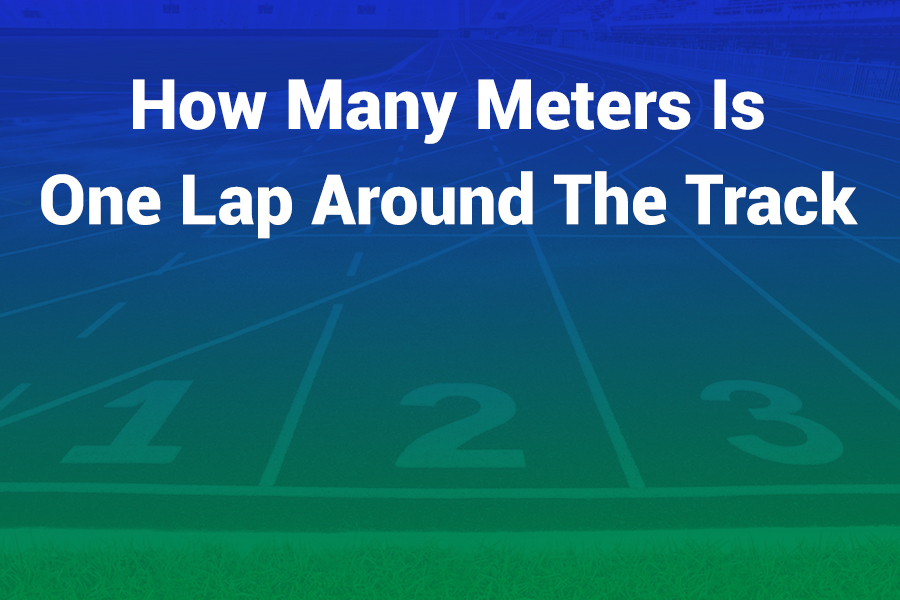If you ever wonder exactly how long it is to run one lap around a track, here’s your definitive guide. A standard outdoor track’s innermost lane measures 400 meters, which is why one lap is often referred to as “a 400.”
In this article you will learn how that measurement is defined, how lane width affects distance, how many laps equal a mile, and what adjustments you must make when running in outer lanes — in this article.
Standard Track Geometry and Why 400 Meters
Athletics authorities worldwide use a track layout that combines two straight segments and two semicircular curves. The inner boundary of lane 1 (the “curb line”) is measured to yield exactly 400 meters for one full lap. To build that, each straight is about 84.39 meters long, and each semicircle has a radius of 36.50 meters. Together they sum to 400 meters.
That 400 m standard came into use because it balances practicality and measurement simplicity. It approximates a quarter mile (because one mile is 1,609.344 m), and it allows many races to be run in whole multiples of laps.
Track Lanes and How They Add Distance
Not every lane is equal. As you move outward, each lane’s curve becomes wider, which increases the path length. All lanes are typically 1.22 meters wide. Because of that extra width in curves, the distance in lane 2, lane 3, etc., grows steadily.
For example:
- Lane 1: 400.00 meters
- Lane 2: about 407.04 meters
- Lane 3: about 414.70 meters
- Lane 4: about 422.37 meters
That’s because the extra width around the curves adds “belt lengths” which are calculated by adding twice the lane width times π to the inner semicircles. The difference can be 20+ meters by lane 8.
When lanes get wider, race organizers use “staggered starts” so each runner covers an equal effective distance.
Indoor vs. Outdoor Track Laps
Indoor tracks often use a 200-meter lap in the innermost lane. That means a runner must do two laps indoors to equal one outdoor lap. However, indoor track lengths vary depending on the facility (some are 300 m, 250 m, etc.).
But when people casually say “one lap,” they’re nearly always referring to the outdoor 400 m lap.
How Many Laps Make a Mile?
One mile equals 1,609.344 meters. On a 400 m track (lane 1), you’d need four full laps plus an additional 9.344 meters to complete a full mile.
Because the extra distance is small, many tracks place a marker showing where to finish a mile. In outer lanes, fewer than four laps are needed for a mile, because each lap covers more than 400 meters. In lane 4, for instance, a lap is ~422.37 m, so it takes about 3.81 laps to equal a mile.
Why 400 Meters and Not 440 Yards?
Historically, many U.S. tracks used 440 yards (a quarter mile), which is 402.336 m. When global competition shifted to metric, the 400 m standard replaced 440 yards. That made international events uniform and easier to administer.
Why Lane Choice Matters in Training
If you train by counting laps, choosing lane 1 gives you the exact 400 m per lap. But many tracks reserve lane 1 for race meets or faster runners, meaning workouts often use lanes 2–4. That means you’ll run slightly more than 400 meters per “lap.” Over multiple laps, those extra meters can add up.
Knowing your lane’s lap length helps you convert lap count to total distance accurately. Many training apps and watches let you input track lap length so distance readings stay precise.
Practical Examples
- Say you run 10 laps in lane 1: that’s exactly 4,000 meters (4 km).
- In lane 4, 10 laps: 10 × 422.37 = 4,223.7 m (4.224 km).
- To run a 5K (5,000 m) on a 400 m track in lane 1, you’d do 12.5 laps (12 full laps + 200 m).
- On an indoor 200 m track, you’d do 25 laps to cover 5,000 m in the inner lane.
How Officials Measure Tracks
Officials measure along a line 0.30 meters outward from the inside edge of lane 1. This offset accounts for runner’s body width. That subtle adjustment ensures fairness in official lap length designation.
They follow rules set by governing bodies (e.g., World Athletics) to calibrate curves and straightaways so the total inner-lane lap is exactly 400 meters.
Why You Hear “One Lap Is a Quarter Mile”
Because one mile is 1,609.344 m, 400 m is approximately 0.2485 miles — close enough to be casually called a quarter mile. That shorthand persists in running communities.
Edge Cases and Nonstandard Tracks
Some tracks, especially older or recreational ones, don’t follow the exact 400 m standard. You may find 430 m laps or odd lengths. Always check posted lap lengths if unsure.
Conclusion
- One lap in the innermost lane of a standard outdoor track = 400 meters
• Outer lanes add distance due to wider curves
• A full mile = 4 laps plus 9.344 meters in lane 1
• Indoor tracks are usually 200 m per lap
• Training in outer lanes inflates your lap distance
• Always verify the track’s lap length if using lap counts to track mileage
Knowing exactly how many meters are in one lap around the track helps you plan workouts, track your pace, and convert laps into race distances. Whether you’re doing interval training, logging miles, or simply staying fit, accurate lap measurement lets you train smarter.

